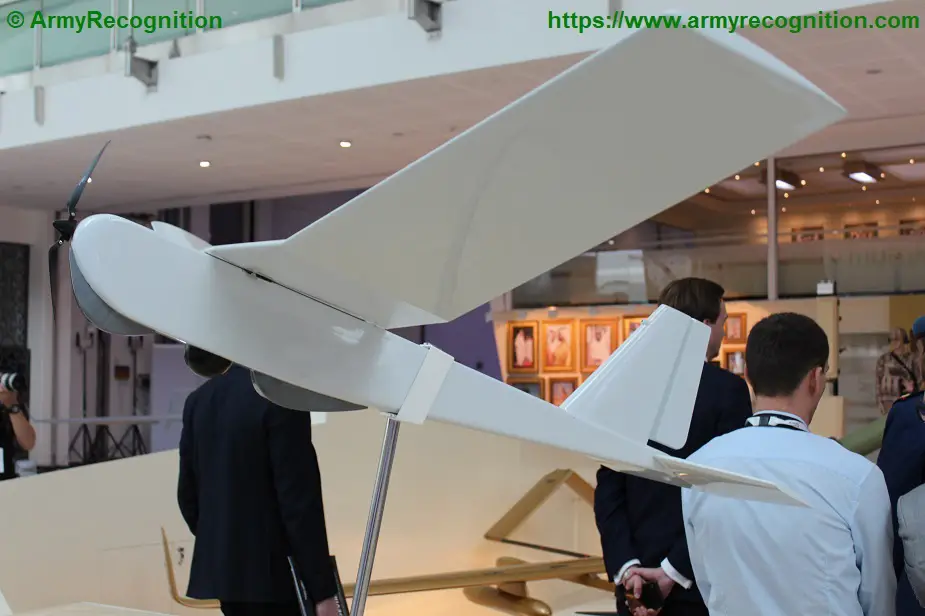AeroVironment, Inc., a global leader in unmanned aircraft systems (UAS), announced its receipt of two firm-fixed-price orders totaling $9,804,448 from the NATO Support and Procurement Agency (NSPA). The orders, received on March 5, 2020 and April 16, 2020, encompass the procurement of Raven and Puma3 AE tactical UAS and spares. Delivery for the first order is anticipated by August 2020 and the second order by October 2020.
Follow Air Recognition on Google News at this link
 PUMA 3 AE, displayed at UMEX 2020 (Picture source: Army Recognition)
PUMA 3 AE, displayed at UMEX 2020 (Picture source: Army Recognition)
The orders are part of a three-year base contract received from NSPA in January 2020. The contract includes an option for two additional years of logistics support for Raven, Wasp and Puma tactical UAS. The total potential value of the multi-year contract is $80 million, encompassing the procurement and sustainment of AeroVironment tactical unmanned aircraft systems employed by the defense forces of several NATO countries.
“AeroVironment’s tactical unmanned aircraft systems, such as Raven and Puma, have helped transform the way U.S. and allied forces plan, train, equip and operate,” said Rick Pedigo,vice president of sales and business development at AeroVironment. “Both systems benefit from continuous technology improvements and pack significant capabilities into portable, man-packable platforms that provide operators with rapid and effective force protection.”
The AeroVironment Puma 3 AE is a fully man-portable unmanned aircraft system designed for land and maritime operations. The hand-launched Puma 3 AE has a wingspan of 9.2 feet (2.8 meters), weighs 15 pounds (6.8 kilograms) and can operate for up to 2.5 hours at a range of up to 12.4 miles (20 kilometers) with a standard antenna, and up to 37.2 miles (60 kilometers) with AeroVironment’s Long-Range Tracking Antenna (LRTA). Capable of landing in water or on land, the all-environment Puma, with its Mantis i45 EO/IR sensor suite, empowers the operator with extended flight time and a level of imaging capability never before available in the tactical UAS class.
AeroVironment’s family of tactical UAS use a common ground control station and software, allowing for improved interoperability and decreased training and logistics costs for NATO forces.
 RQ-11B Raven (Picture source: Army Recognition)
RQ-11B Raven (Picture source: Army Recognition)
AeroVironment’s Raven system is designed for rapid deployment and high mobility for operations requiring low-altitude intelligence, surveillance and reconnaissance. With a wingspan of 4.5 feet (1.4 meters) and weighing just 4.2 pounds (1.9 kilograms), the hand-launched Raven provides situational awareness, day or night, with an operational range of 6.2 miles (10 kilometers). The Raven’s Mantis i23 EO/IR gimbaled payload delivers real-time video or infrared imagery to ground control and remote viewing stations.
 Wasp AE RQ-12A. The contract includes an option for two additional years of logistics support for Raven, Wasp and Puma tactical UAS (Picture source: Army Recognition)
Wasp AE RQ-12A. The contract includes an option for two additional years of logistics support for Raven, Wasp and Puma tactical UAS (Picture source: Army Recognition)
The all-environment Wasp combines hand-launch capabilities with deep-stall landing for operations in confined areas on land or water. The aircraft also includes an integrated landing camera that provides operators with exceptional situational awareness as the aircraft approaches the ground.
Weighing in at just over a kilogram, the Wasp AE delivers best-in-class capabilities for an unmanned aircraft system of its size, including stealth-like manoeuvrability, superior imagery, encrypted video and exceptional ease of use. Wasp’s gimbaled payload is mechanically stabilized, enabling it to transmit advanced imagery in high-wind conditions, while its advanced avionics allow operators the option of manual or autonomous navigation.
















